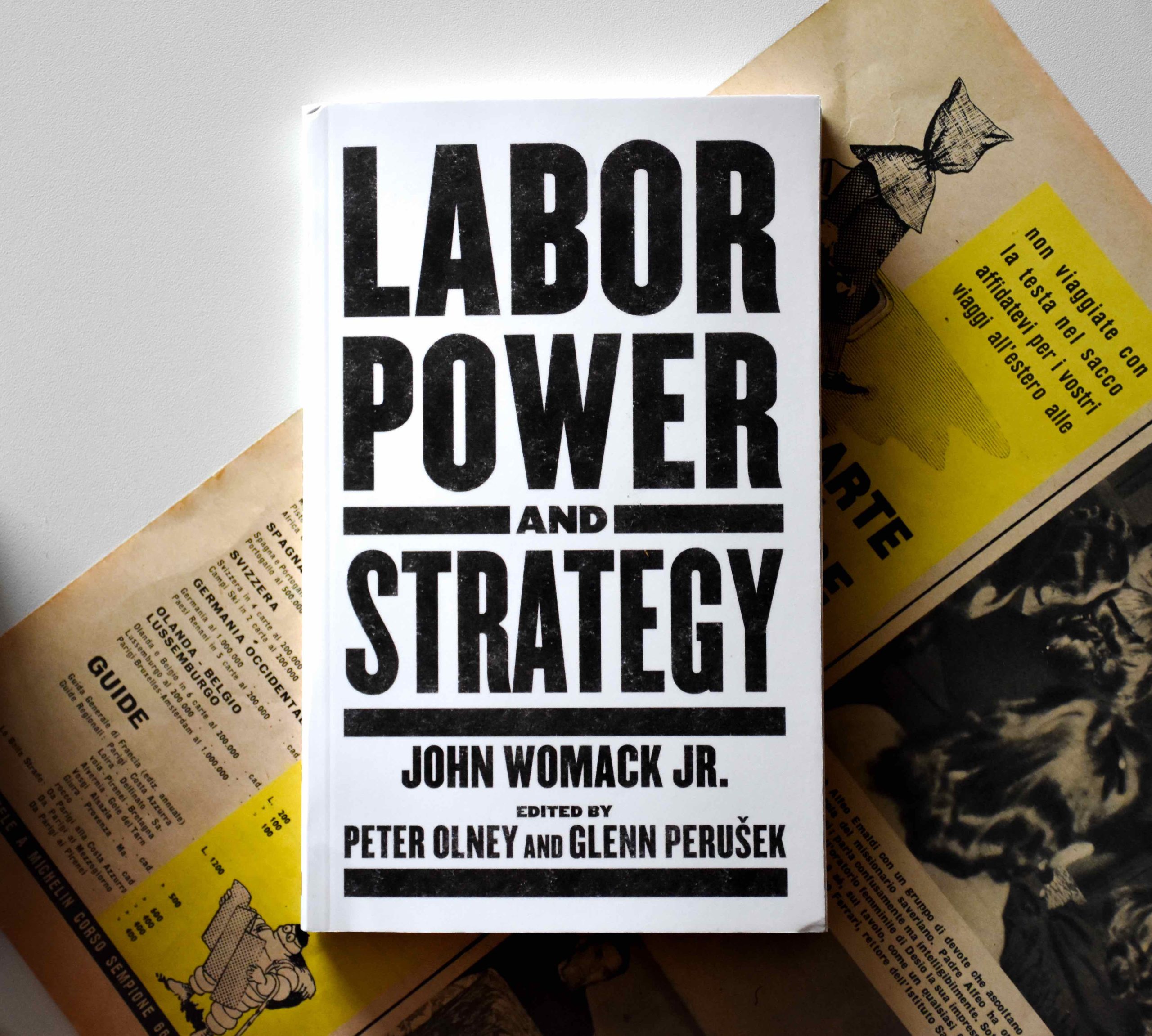By Jeffery Hermanson
Stansbury Forum
In December of 2023 Ben Fong published a review of Labor Power and Strategy (PM PRess) in the online journal Catalyst. The review provoked a lot of discussion and continuing interest in the interview with John Womack on the topic of working class power. Jeff Hermanson, a long time organizer in many industries from the garment district of NYC to the Biz in Hollywood wrote a response to Fong based on his rich experience. The Forum is happy to publish his response to Ben Fong.
Ben Fong has written an interesting review of the recent book Labor Power and Strategy. I thought his response to Womack was better than any of the ten respondents in the book with the exception of Gene Bruskin’s discussion of the Smithfield pork processing organizing experience. But I also think the approach of Brother Fong underestimates the remaining power of workplace organizing, as demonstrated by two recent struggles, that of the WGA and SAG-AFTRA, and that of the UAW.
Womack writes, “You have to wound capital to make it yield anything. And you wound it painfully, grabbing its attention, when you take direct material action to stop its production, cut its profit.”

In the Hollywood writers’ and actors’ strikes, we see how a well-organized and well-led small (11,000 members), independent and democratic union in a position of structural power (the WGA) can use that power to “wound capital” in a significant way, especially when supported by organized workers in the broader industry. Writers are the initiators of the process of production, so their strike takes time to take effect, as their finished scripts wind through the production pipeline. In this case, as in the previous 2007-8 strike, the writers undertook location picketing (productions in process). Based on the experience of the 2007-8 strike, the writers began location picketing earlier in the strike (in 2007-8 there was initially some member resistance to “picketing our own productions”); and the picketing was much more effective this time because of the solidarity support of the IATSE (cinematographers and other crew) and the Teamsters, who refused to cross picket lines. Then, ten weeks into the writers’ strike, the actors also struck, completely shutting down Hollywood film and TV.
It is highly likely that there would have been no actors’ strike if the writers had not struck first. The writers demonstrated the new degree of solidarity in the industry (in 2007-8 the IATSE opposed the writers’ strike and their members crossed the picket lines) and the ability to shut down production, even productions that had finished scripts. The writers also defined the issues – compensation for streaming, protections for the use of AI – and demonstrated the degree of public support for the writers’ positions, on issues which were shared by the actors. Again, the structural power of the writers – their role as the suppliers of an essential element of the production process – was key to mobilizing the solidarity support of the other unions, and that solidarity support then gave a morale boost to the writers and helped maintain their commitment to fight to the end. “Pencils down” was shown to be an effective strategy.
In the UAW strike, the innovative “Stand Up Strike” picked strategic plants and distribution centers as their targets, while workers in other plants continued working. This preserved the strike fund, avoided putting pressure on all UAW members in the Big Three at once, and hit profit centers of the employers. The assembly plants chosen were not just the most profitable plants, they also stood at the head of long and complex supply chains, and their shutdown had immediate negative effects on the component and parts suppliers. Layoffs immediately began at parts suppliers, not only in the US but also in Mexico. Some of the first supply chain producers to be hit were the seat manufacturers, which were in a just in time (JIT) relationship with the assemblers. They had to stop right away, because there was no place to store bulky seats, and hundreds of workers were laid off from seat plants on the Mexico-US border. Industry analysts reported concerns that a long strike would damage supply chain firms, and could provoke bankruptcy of some, disrupting the ability of the Big Three to resume production when the strike ended.
Both of these examples demonstrate the vulnerability of complex production networks to targeted strikes by small groups of workers in strategic structural positions in those production networks. Defining the critical “strategic structural positions” is a key task of union leaders, and requires serious research and analysis. Often this research requires the participation of workers involved in the production process themselves.
I had an exchange with John Womack Jr. about a strike I coordinated in the 1980’s for the International Ladies Garment Workers Union in the NYC garment district. We were striking a non-union blouse manufacturer who was using around 10 to 15 Korean-owned sewing shops that employed Latino workers, mostly Mexicans and Dominicans. We had salted several of the shops with former strikers whose shops had gone out of business rather than sign a union contract. In one of the most important shops, we struck but could only pull out a minority of workers, among whom were four button-hole machine operators. I came out of the dress industry, so in this strike I learned that in a blouse shop, the button-hole machine operators were the most important (and most highly paid) workers, because operating this machine required a high degree of skill, and if the button-holes were not precisely placed, the blouse would not hang correctly. Therefore we agreed to pay the full salary of the four button-hole machine operators, while the other strikers went to look for work in the other shops in the production network, to “bore from within.”
Another part of the importance of this particular shop was that the employer was an officer of the Korean Apparel Manufacturers Association, of which all 400 Korean-owned garment factories in NYC were members. So KAMA decided to help this owner out by asking other owners to come to the shop and help move cut fabric across the picket line. This effort resulted in the KAMA members discovering the anger and fighting spirit of the Latino workers, as they were unable to cross a very militant picket line. After this incident, the KAMA president, who owned another of the most important shops of this network, approached the union through a Korean organizer that worked with me, and asked how the Korean garment manufacturers could resolve this dispute. We told them that if they stopped working for the blouse company, we would have no reason to target them; and they agreed to stop working on the blouse company’s goods until the strike was over. This was a turning point in the strike, which we eventually won.
Thus there are several factors that need to be looked at to determine whether a particular group of workers is situated in a “strategic structural position.” First is the technical question, i.e. are their skills and function essential for the production process, are they not easily replaced? Second is the economic question, i.e. what role does their particular unit play in the profitability or economic viability of the enterprise or industry sector? What impact does stopping their unit have on other employers in the production network? Third is the social question, i.e. what impact does their action have on other groups of workers in other parts of the production system?
The third point might be considered to be part of the “associational power” equation; but in my opinion, I believe Womack’s view, which I share, is that the social impact of action by a group of workers is largely dependent on the perception by other groups of the structural power the first group can wield. In a garment production system, the cutters are widely considered to have more structural power than the sewers, since they are fewer in number, and if they stop work the sewers will have no cut fabric to sew. Therefore a strike by the cutters often convinces the sewers to join in the strike, as the expectation of victory is enhanced. This is analogous to the situation in the entertainment industry, where a strike by the writers, who are few in number but who produce the scripts that are necessary to start the production process by actors, directors and crews, encourages other industry workers to take action.
In complex distribution systems, like Amazon, Walmart, Target, Kroger’s, US Foods, etc., the questions presented are similar but as in every inquiry can only be answered by concrete analysis of concrete conditions.
…







